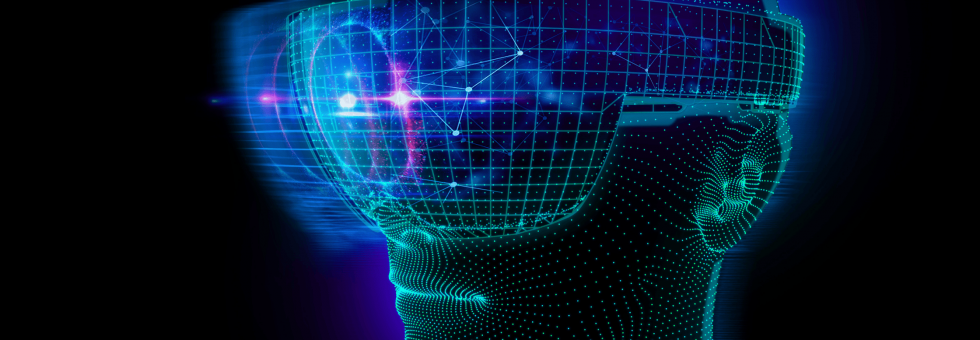Imagine stepping into a world where everything feels real, from the sights and sounds to the interactions with virtual characters. This is the power of Virtual Reality (VR), and when combined with Artificial Intelligence (AI), it becomes even more immersive and dynamic. From realistic simulations to personalized experiences, AI is revolutionizing how we interact with virtual environments. In this blog, we’ll explore what virtual reality is, how AI enhances it, and some exciting real-world applications. Whether you’re a tech enthusiast or a beginner, this guide will give you a glimpse into the future of AI-powered VR.
What is Virtual Reality, and How Does AI Enhance It?
Virtual Reality Explained
Virtual Reality (VR) is a technology that creates a fully immersive digital environment, allowing users to interact with a simulated world. Unlike Augmented Reality (AR), which overlays digital content onto the real world, VR replaces the physical environment with a virtual one.
How AI Enhances VR
AI brings intelligence to VR by making virtual environments more realistic, interactive, and adaptive. Here’s how AI enhances VR:
- Realistic Avatars: AI can create lifelike virtual characters that mimic human expressions and movements.
- Adaptive Environments: AI enables VR environments to respond to user actions, creating personalized and dynamic experiences.
- Natural Interactions: AI-powered voice and gesture recognition allow users to interact with VR environments more intuitively.
AI in VR Applications
AI-powered VR is being used in a variety of applications, making virtual experiences more engaging and practical. Here are some key areas:
1. Gaming and Entertainment
AI is transforming VR gaming by creating more immersive and interactive experiences. For example, AI-driven non-player characters (NPCs) can adapt to the player’s behavior, making the game more challenging and engaging.
2. Training and Education
VR is being used for training in fields like medicine, aviation, and the military. AI enhances these simulations by creating realistic scenarios and providing real-time feedback. For instance, surgeons can practice complex procedures in a risk-free virtual environment.
3. Healthcare and Therapy
AI-powered VR is being used for therapeutic purposes, such as treating phobias, PTSD, and chronic pain. Virtual environments can be tailored to the patient’s needs, providing a safe and controlled space for therapy.
4. Social VR
AI is enabling more natural and engaging social interactions in virtual spaces. Platforms like VRChat use AI to create realistic avatars and facilitate seamless communication between users.
Real-World Examples of AI and VR
AI-powered VR is already making a significant impact across industries. Here are some real-world examples:
1. AI-Powered VR Training Simulations for Surgeons
Medical training platforms like Osso VR use AI to create realistic surgical simulations. These VR environments allow surgeons to practice procedures, receive real-time feedback, and improve their skills without risking patient safety.
2. Virtual Reality Games with AI-Driven NPCs
Games like Half-Life: Alyx use AI to create intelligent NPCs that adapt to the player’s actions. These characters can navigate the environment, interact with objects, and respond to the player in realistic ways, enhancing the overall gaming experience.
3. AI-Generated Virtual Worlds
AI can create entire virtual worlds that adapt to user behavior. For example, Promethean AI is a tool that helps developers generate realistic 3D environments for games and simulations. The AI analyzes user input and creates customized virtual spaces in real-time.
Fun Fact: AI Can Create Entire Virtual Worlds That Adapt to Your Behavior!
Did you know that AI can generate entire virtual worlds that adapt to your actions? Tools like Promethean AI and NVIDIA’s GauGAN allow developers to create dynamic and interactive VR environments that respond to user behavior, making the experience more immersive and personalized.
The Future of AI and VR
The future of AI and VR is incredibly exciting. Here are some trends to watch out for:
- Hyper-Realistic Avatars: AI will enable the creation of avatars that look and behave exactly like real people, enhancing social VR experiences.
- Personalized VR Content: AI will tailor VR experiences to individual preferences, creating unique and engaging content for each user.
- AI-Driven VR Assistants: Virtual assistants powered by AI will help users navigate VR environments, providing guidance and support.
Conclusion
AI and VR are a powerful combination, transforming how we interact with digital environments. From realistic simulations and intelligent NPCs to personalized experiences and adaptive worlds, AI is making VR more immersive and dynamic than ever before.
As AI and VR continue to evolve, the possibilities are endless. Whether you’re exploring virtual worlds, training for a high-stakes profession, or connecting with others in a social VR space, AI is enhancing the way we experience reality—virtually.
Are you eager to dive into the world of Artificial Intelligence? Start your journey by experimenting with popular AI tools available on www.labasservice.com labs. Whether you’re a beginner looking to learn or an organization seeking to harness the power of AI, our platform provides the resources you need to explore and innovate. If you’re interested in tailored AI solutions for your business, our team is here to help. Reach out to us at [email protected], and let’s collaborate to transform your ideas into impactful AI-driven solutions.





